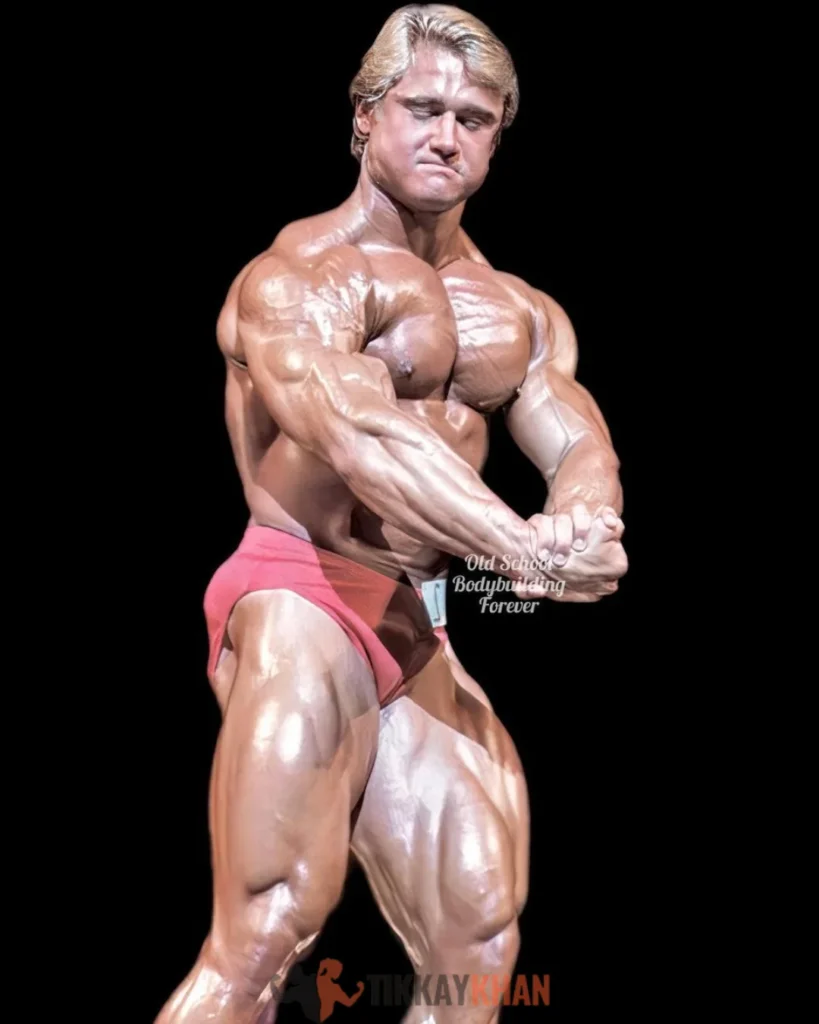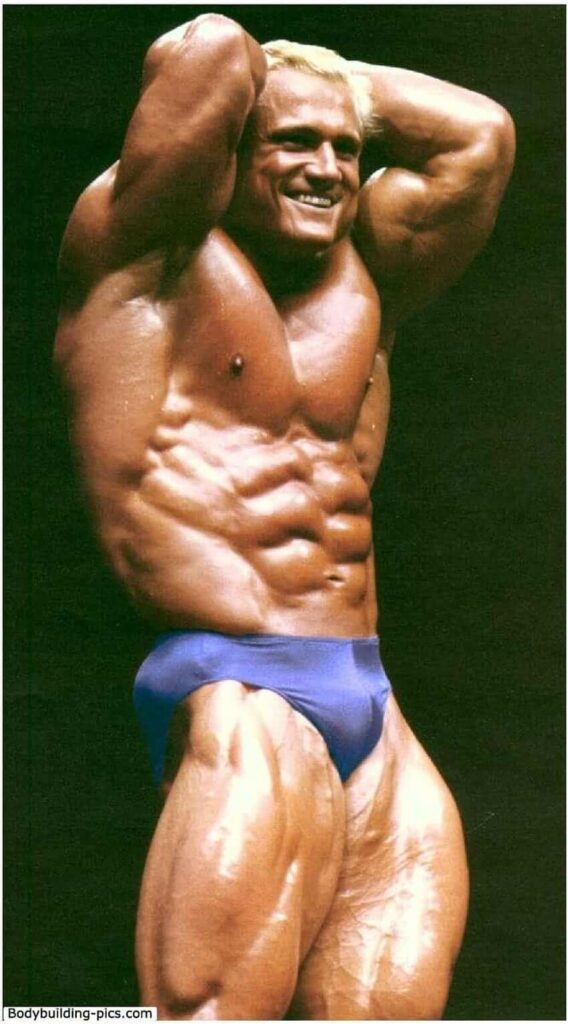In the illustrious realm of bodybuilding, certain names resonate as paragons of unparalleled muscle development.
Tom Platz, a towering figure in this arena, not only left an indelible mark with his iconic quad/hamstrings/adductor combination but also gained acclaim for another remarkable feature – his extraordinary development of the soleus muscle.
In this comprehensive exploration, we delve into the enigma of Tom Platz’s calves, focusing on the often-overlooked soleus, and uncover the secrets behind his unique approach to calf training.
The Soleus Revelation

Tom Platz’s calves weren’t just impressive they were a testament to meticulous training and an understanding of muscle dynamics.
While many in bodybuilding focus on the entire calf complex, Tom Platz distinguished himself by placing special emphasis on the soleus muscle.
The soleus, a powerful muscle situated beneath the gastrocnemius, contributes significantly to calf definition and overall lower leg aesthetics.
In a revealing video, Tom Platz shares insights into his seated calf static-rep finishing workout, shedding light on the targeted training of the soleus.
This distinctive approach set him apart in an era where conventional calf training often overlooked the intricacies of muscle development.
The Static Repertoire: Risks and Rewards
However, with great innovation comes caution. Tom Platz’s journey is not without its cautionary tales, particularly regarding the potential risks associated with static reps.
Tom Platz himself experienced a bicep injury in the early 1980s, a setback that prompted a reevaluation of his training methodologies.
The injury serves as a stark reminder that engaging in exercises involving heavy weights and static contractions entails a certain level of risk, including the possibility of muscle-tendon detachment.
To mitigate these risks, Tom Platz suggests a more prudent approach. Instead of focusing on extremely heavy static repetitions, he advocates using lighter weights while prolonging the duration of muscle tension.
This strategy allows even lighter resistance to feel significantly heavier, ensuring a safer and more controlled approach to training and muscle development.
Tom Platz’s Personal Calves Odyssey

In Tom Platz’s own words: “I’m going to tell you some stuff that I never really tell most people.” He shares that, contrary to the prevalent belief in his era, he found the most success training his calves twice a week.
His body type responded best to intense calf training on this schedule, focusing primarily on normal calf raises, standing calf raises, and seated calf raises.
A standout element in Tom Platz’s calf training regimen was his utilization of static reps, a technique that involved holding significant weights at the end of his workout.
Whether on the standing calf raise or seated calf raise, he would progressively load the machine with as many plates as possible.
The goal was simple yet profound – to hold the weight still until he could barely maintain the tension.
This static rep, performed once or twice a week, proved to be a game-changer for Tom Platz’s calf development.
The Art of Holding Still: Magic in Static Reps
The essence of Tom Platz’s static rep methodology lay in the sheer intensity of the tension applied to the calves.
By holding the weight still, he pushed his tendons and ligaments to their limits, creating an environment conducive to substantial muscle growth.

The impact of this technique, according to Tom Platz, was nothing short of magic for his calves.
Tom Platz emphasizes the importance of incorporating static reps sparingly, perhaps once a week or twice at the most.
This cautious approach aligns with the recognition of the immense stress these static contractions can place on the musculature.
The goal is not to court injury but to leverage the benefits of static reps in a controlled and calculated manner.
The Unspoken Truth: Tom Platz’s Legacy and Wisdom
In a candid revelation, Tom Platz shares a truth seldom articulated in the glossy pages of bodybuilding magazines. He acknowledges that, for him, the old-school, hard work, and heavy training methodology worked best for calf development.
In the dichotomy of choosing between implants and intensive static partial work, Tom Platz opted for the latter, and the results speak for themselves.
This unspoken truth, now unveiled, adds another layer to the mystique of Tom Platz.

It isn’t just about the sets, reps, or weights it’s about understanding one’s body, pushing boundaries sensibly, and embracing methodologies that stand the test of time.
Conclusion: The Calves Legacy of Tom Platz
In the annals of bodybuilding history, Tom Platz’s calves stand as a testament to innovation, risk, and ultimately, triumph.
The emphasis on the soleus muscle, the calculated use of static reps, and the wisdom gleaned from personal setbacks collectively paint a portrait of a bodybuilding maverick.
Aspiring bodybuilders and fitness enthusiasts can draw inspiration from Tom Platz’s journey.
The lessons extend beyond the gym, urging individuals to approach their fitness odyssey with prudence, innovation, and a deep understanding of their physiology.
In the realm of calves, Tom Platz’s legacy isn’t just in the muscle fibers he developed it’s in the knowledge he shared, the risks he navigated, and the magic he discovered in the art of holding still.